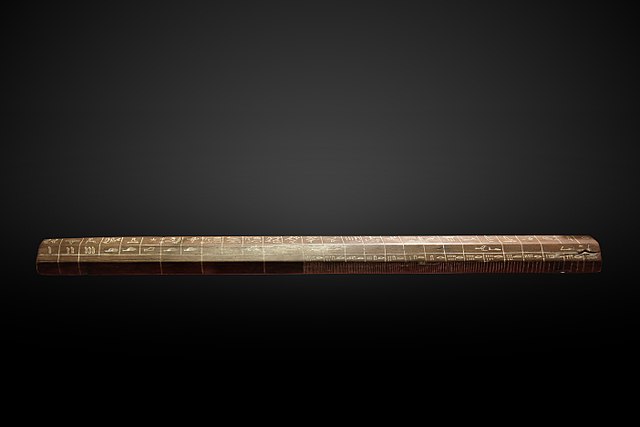The cubit is an ancient unit of length based on the distance from the elbow to the tip of the middle finger. It was primarily associated with the Sumerians, Egyptians, and Israelites. The term cubit is found in the Bible regarding Noah's Ark, the Ark of the Covenant, the Tabernacle, and Solomon's Temple. The common cubit was divided into 6 palms × 4 fingers = 24 digits. Royal cubits added a palm for 7 palms × 4 fingers = 28 digits. These lengths typically ranged from 44.4 to 52.92 cm, with an ancient Roman cubit being as long as 120 cm.
Cubit rod of Maya, 52.3 cm long, 1336–1327 BC (Eighteenth Dynasty)
The Nippur cubit-rod in the Archeological Museum of Istanbul, Turkey
A unit of measurement, or unit of measure, is a definite magnitude of a quantity, defined and adopted by convention or by law, that is used as a standard for measurement of the same kind of quantity. Any other quantity of that kind can be expressed as a multiple of the unit of measurement.
The former Weights and Measures office in Seven Sisters, London
Units of measurement, Palazzo della Ragione, Padua
An example of metrication in 1860 when Tuscany became part of modern Italy (ex. one "libbra" = 339.54 grams)





